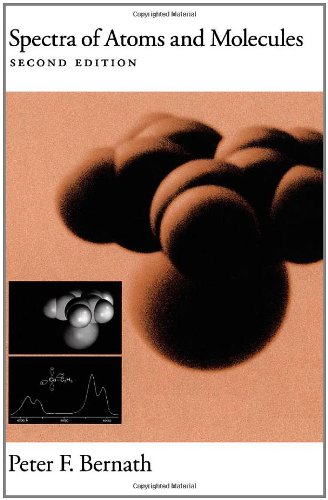Spectra of Atoms and Molecules ebook
Par hall joanne le vendredi, juillet 29 2016, 21:32 - Lien permanent
Spectra of Atoms and Molecules. Peter F. Bernath

Spectra.of.Atoms.and.Molecules.pdf
ISBN: 0195075986,9780195075984 | 405 pages | 11 Mb

Spectra of Atoms and Molecules Peter F. Bernath
Publisher: Oxford University Press
We expect six fundamental vibrations (12 minus 6), and these have been assigned to the spectrum absorptions. Spectroscopy is used in physical and analytical chemistry because atoms and molecules have unique spectra. This feature will calculate in the background a simulation of the spectrum of the molecular structure present in the spectral window, highlighting the expected chemical shifts when the user hovers the mouse over a proton or a carbon. Using atomic force microscopy, chemist Felix Fischer and physicist Michael Crommie have for the first time captured images of molecules before and after they react, which will allow chemists to better tune reactions to get the products they want. This is the source of the problem of resolution, since we can A measurement that precise requires the use of ultra-low noise electronics and, like other forms of high-level spectroscopy, temperatures near absolute zero — about 1.5 Kelvin. The four-atom molecule of formaldehyde, the gas phase spectrum of which is shown below, provides an example of these terms. All molecules and atoms absorb, as well as emit, light at varying wavelengths. Valence electrons – the electrons in the outermost orbitals of atoms and molecules – determine chemical bonding, electrical conductivity, and a host of other properties. The Basics of Spectroscopy in Astronomy. Spectroscopy is the study of matter and how electromagnetic radiation interacts with it. However, the energy released is proportional to the amount needed to hold the molecules in position (a lot) divided by the number of atoms being held by this force (a lot more). It is more like a puzzle, putting all the information together and then nailing down what the structure likely is. A group led by Structural identification techniques such as mass spectrometry and nuclear magnetic resonance spectroscopy sometimes fail, such as when all of the products have the same mass and NMR spectra of product mixtures have overlapping peaks that are hard to resolve. �You have to deduce that by taking nuclear magnetic resonance, infrared or ultraviolet spectra. �nonlinear multidimensional spectroscopy.” For an outstanding example of the vital questions nonlinear multidimensional electronic spectroscopy can answer, Belkacem points to the work of Graham Fleming, founder of Berkeley Lab's Physical Biosciences Division. High-resolution atomic force microscopy (AFM) has been extended to a new application—taking before and after pictures of individual molecules as they undergo a chemical reaction.